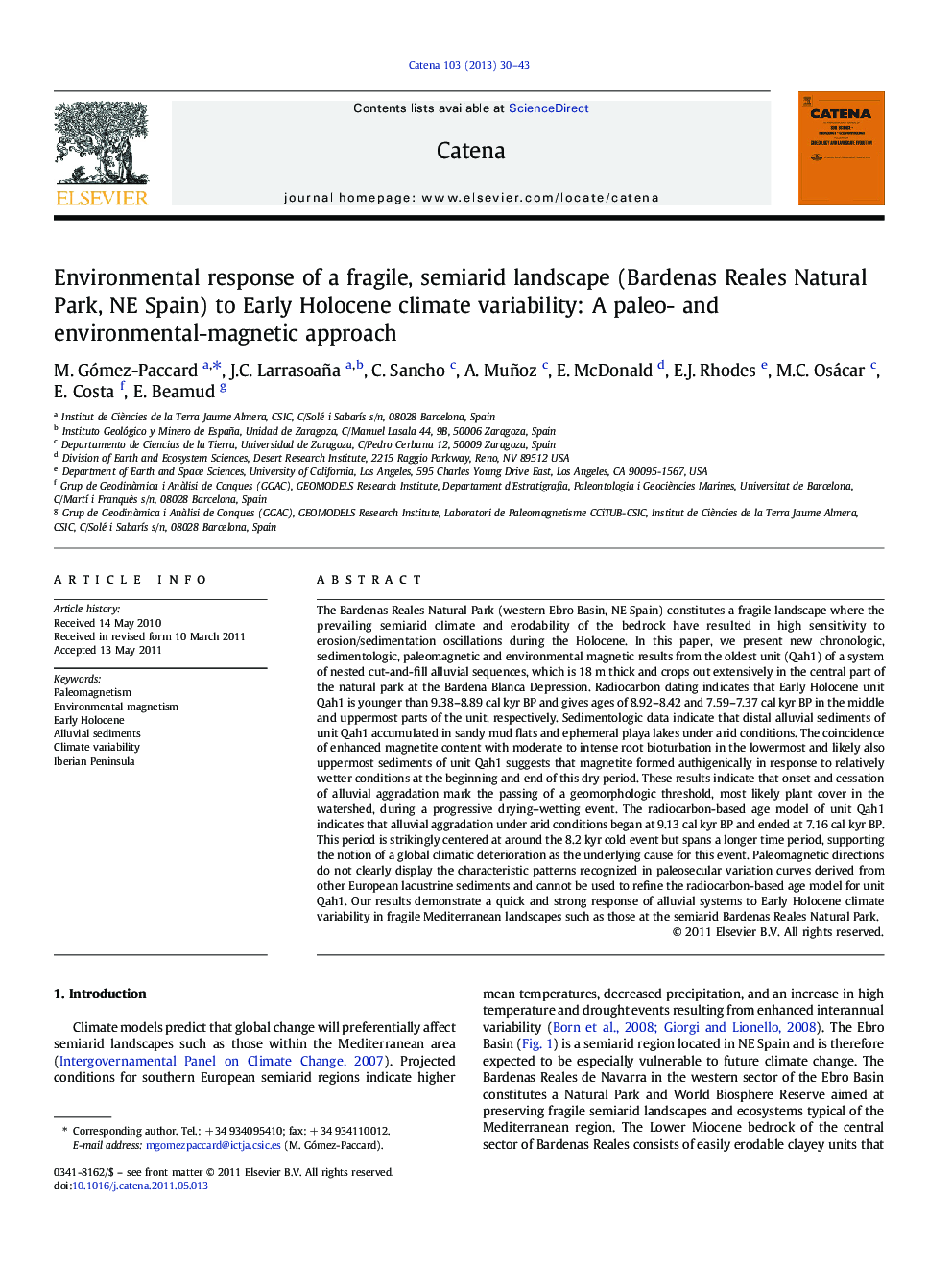| Article ID | Journal | Published Year | Pages | File Type |
|---|---|---|---|---|
| 4571737 | CATENA | 2013 | 14 Pages |
The Bardenas Reales Natural Park (western Ebro Basin, NE Spain) constitutes a fragile landscape where the prevailing semiarid climate and erodability of the bedrock have resulted in high sensitivity to erosion/sedimentation oscillations during the Holocene. In this paper, we present new chronologic, sedimentologic, paleomagnetic and environmental magnetic results from the oldest unit (Qah1) of a system of nested cut-and-fill alluvial sequences, which is 18 m thick and crops out extensively in the central part of the natural park at the Bardena Blanca Depression. Radiocarbon dating indicates that Early Holocene unit Qah1 is younger than 9.38–8.89 cal kyr BP and gives ages of 8.92–8.42 and 7.59–7.37 cal kyr BP in the middle and uppermost parts of the unit, respectively. Sedimentologic data indicate that distal alluvial sediments of unit Qah1 accumulated in sandy mud flats and ephemeral playa lakes under arid conditions. The coincidence of enhanced magnetite content with moderate to intense root bioturbation in the lowermost and likely also uppermost sediments of unit Qah1 suggests that magnetite formed authigenically in response to relatively wetter conditions at the beginning and end of this dry period. These results indicate that onset and cessation of alluvial aggradation mark the passing of a geomorphologic threshold, most likely plant cover in the watershed, during a progressive drying–wetting event. The radiocarbon-based age model of unit Qah1 indicates that alluvial aggradation under arid conditions began at 9.13 cal kyr BP and ended at 7.16 cal kyr BP. This period is strikingly centered at around the 8.2 kyr cold event but spans a longer time period, supporting the notion of a global climatic deterioration as the underlying cause for this event. Paleomagnetic directions do not clearly display the characteristic patterns recognized in paleosecular variation curves derived from other European lacustrine sediments and cannot be used to refine the radiocarbon-based age model for unit Qah1. Our results demonstrate a quick and strong response of alluvial systems to Early Holocene climate variability in fragile Mediterranean landscapes such as those at the semiarid Bardenas Reales Natural Park.
Research highlights► We present new chronological, sedimentological and environmental magnetic results from a 18 m thick Early Holocene unit. ► The studied sequence is located in the semiarid Bardenas Reales Natural park, in NE Spain. ► We demonstrate a quick and strong response of alluvial systems to the 8.2 kyr event in fragile Mediterranean landscapes.
